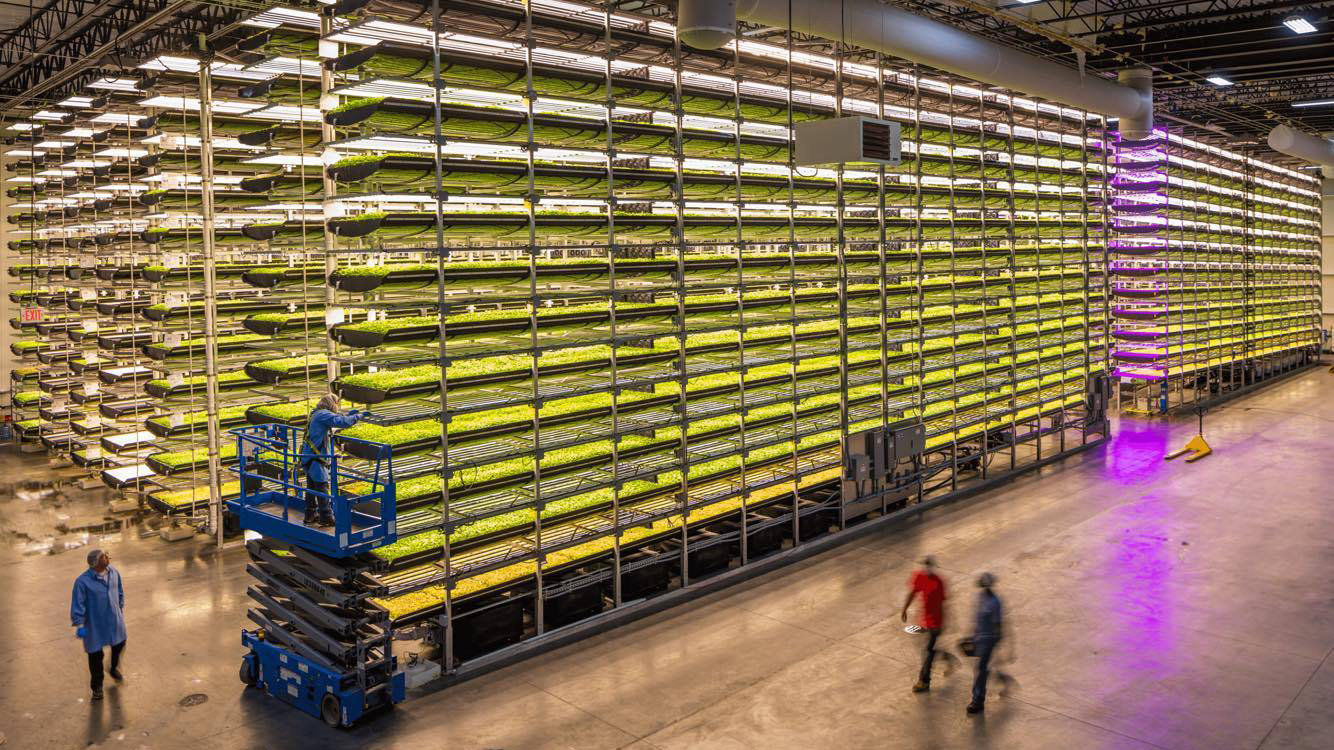Building the sustainable cities of the future
The ultimate in urban planning

Earlier this year, a report from by United Nations predicted that 2.5 billion people will be living in cities by 2050; that’s two out of every three people on the planet. While that of course means cities will become increasingly diverse, the demand on resources and services, such as food, policing, and public transport systems, will rise exponentially.
It's understandable then that governments and organizations around the globe are looking to technology to help power the cities of the future, and make them smarter, creating urban areas that use data-driven, innovate solutions to create efficient, sustainable ways to aid economic development and improve the quality of life for inhabitants.
Sustainable food solutions
Cities need feeding. While the number of cities that are taking charge of their own food destinies and looking for new, innovative ways to cut down on their carbon footprint, and making healthy options more readily available as a result, is growing, there’s still a long way to go.
Thinking about how to feed a rapildy growing population while also tackling obesity and global warming is a huge task; it’s also not the most convenient. Of course it would be easier to keep driving to the local store and pick up a packet of beef that was reared a 15-hour plane journey away, but it’s not sustainable.

AeroFarms in Camden, New Jersey is offering one solution: vertical farming. The company is planning a 78,000 square foot vertical farm that would grow 12 stories of leafy goods, from kale to bok choy. Thanks to tech developments, keeping plants on a steady diet isn’t as time-consuming as it once was; systems can be created that release calculated amounts of nutrients and water into the soil, powered by hydroponic and areoponic systems.
Elsewhere, Good Bank, a Berlin-based restaurant, has implemented urban-farming inside its restaurant space, with incubators growing salad lining the dining room walls.
Looking for alternatives also means opening our palettes to new horizons. Exo and Aspire Food Group are two of the companies currently incorporating crickets into their protein bars – which, by the way, are already sold at Whole Foods.
Sign up for breaking news, reviews, opinion, top tech deals, and more.
Vertical gardens
From vertical farming to vertical gardens. As more people flock to suburban areas, we’re forced to become more innovative about how we use the physical space. Green spaces do way more than just make places pretty – they’ve been found to alleviate stress levels, improve biodiversity, attracting birds and insects, help defuse heat from dense urban areas, and improve air quality.

Italian architecture firm Stegano Boeri Architetti is planning to create a huge Foret Blanche in Paris – a 54-meter high vertical forest that’s planted with trees, shrubs, and flowers. The same firm is also working on a 'Forest City' in China, where everything from schools, to homes, to hospitals will be covered in greenery — CNN dubbed it “the world’s first pollution-eating city”. Meanwhile in London, The Edible Bus Stop is tackling the citiy's pollution with playful ideas like creating an Edible Bus Route, which sees bus stops throughout the city surrounded by herbs and edible flowers.
Two wheels good, four wheels bad
Covering a bus stop in edible petals isn’t the only way to make public transport sustainable. Argentina’s capital Buenos Aires chopped one of the city's major 20-lane avenues in half, leaving 10 lanes for cars. The other half is used as a 'surface subway' – an express lane only for public transport, which gets passengers across the city in half the time.
Other cities are trying to ban cars completely. Madrid has already started to take action by banning non-residents from driving in the city center, and only allowing low-emission cars that belong to locals, delivery vehicles, and public transportation in downtown areas.

When it comes to eliminating vehicle pollution entirely, however, bicycles are the obvious solution. Improving bike lanes in urban areas is a global endeavor at present, with Copenhagen boasting one of the most highly-developed systems. According to Wired, since 2015 the Danish capital has completed a Harbour Ring bike route along the whole inner harbor, piloted a new traffic light system that prioritizes cyclists, launched digital congestion signs to improve bike traffic glow, and opened new superhighway routes. Some 62% of the city’s residents ride their bikes daily, while just 9% drive.
Policing
One important and perhaps less talked-about aspect of smart city innovation is surveillance; namely how police departments are incorporating technology into their operations. One way in which tech is advancing law enforcement is body cameras, with Smart Cities Drive stating that one-third of police departments in the US either already uses or are looking into outfitting their officers with bodycams. The devices not only help to keep police officers safe, but are used to record interviews, and take photographs.

Drones are also part of the move to increase public safety, used to track down stolen vehicles, and chase fleeing ones. Earlier this year the city of Louisville in Kentucky submitted an application to the Federal Aviation Administration asking if it could use drones to respond to shooting scenes – the drones would be equipped with ShotSpotter, a system that uses a series of microphones to identify the source of gunfire within seconds.
If technology can help to make our urban environments safer, as well as cleaner, greener and healthier, then the cities of the future could well be pretty idyllic places to live.
TechRadar's Next Up series is brought to you in association with Honor
